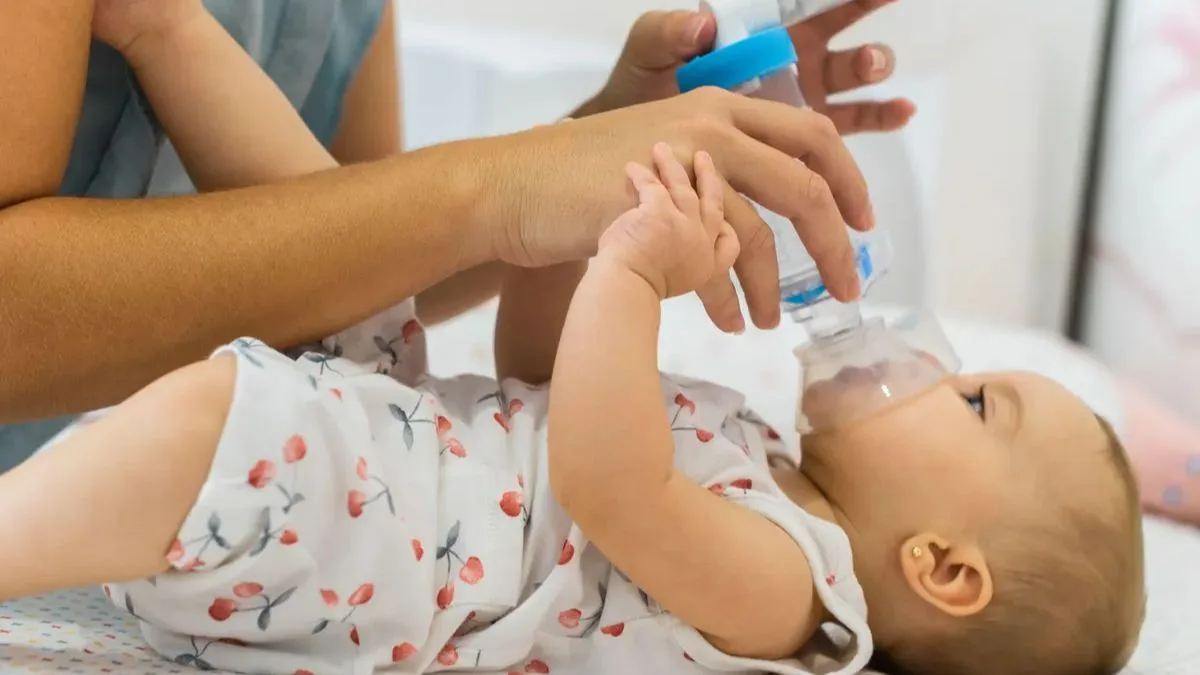A Respiratory Virus Kills 100,000 Infants Under The Age Of Five.

While COVID-19 and monkeypox take center stage, recent research reveals the terrible potential of another viral disease, respiratory syncytial virus (RSV), which kills more than 100,000 children worldwide each year.
According to the Respiratory Syncytial Virus Consortium in Europe, RSV is the most prevalent cause of acute lower respiratory tract infections in babies and young children worldwide, but the illness burden is disproportionately high in underdeveloped nations.
Lower respiratory infections affect the airways below the larynx or voice box, including the windpipe, or trachea, and the lungs’ tiny air sacs. Acute bronchitis, bronchiolitis, and pneumonia are among them.
Despite this, there is very little routine RSV testing in clinical settings, particularly in tertiary [specialized health care] facilities, owing to the lack of a specific treatment.”
According to researchers from India, South Africa, the United Kingdom, and the United States, RSV plays a substantial role in the suffering and death of young infants around the world, particularly in the first six months of life and in LMICs.
RSV sickness kills one in every 50 children under the age of five and one in every 28 children from 28 days to six months worldwide, according to the study.
The researchers examined 481 papers and calculated that in 2019, there were 33 million RSV-associated acute lower respiratory infection episodes and 101,400 RSV-related deaths among children under the age of five. The expected estimates for infants aged 0 to six months were 6.6 million and 45,700, respectively.
The study concludes that “the disproportionately high RSV burden in the younger age groups in LMICs necessitates more broad community case management and effective and cheap immunization programs.”
Although there is no specific RSV vaccine, the experts recommend that passive immunization programs be implemented to tackle the disease. In place of a vaccination, which gives active protection, a person receives antibodies, which are proteins created in the body in reaction to a foreign invader or antigen.
The researchers suggest that passive immunization programs to provide RSV protection in the first six months of life could dramatically lower the RSV burden. They do, however, state that further evidence on this strategy is required.
Researchers were also startled to discover that hospital admissions among babies aged up to six months were “consistently fewer” in low-income countries than in high-income nations, “indicating the reality that access and availability to hospital treatment is still limited in LMICs,” they said.
RSV incidence are anticipated to rise, according to experts, because masks and lockdowns have reduced natural protection to this and other prevalent viruses.
According to the WHO, development of a vaccine has been slow after a failed one in the 1960s resulted in lung inflammation after the first natural RSV infection following vaccination, proving deadly in two cases.
However, improved understanding of the virus in recent years has resulted in the creation of many vaccine candidates, some of which may obtain regulatory approval in the near future, according to the UN health organisation.
“RSV-targeted therapies are likely to be a significant component of global infant death rate reduction measures, particularly for LMICs,” Krishnan says. “It is critical that manufacturers and global health agencies keep this in mind as they make decisions about access and pricing for new goods.”

He adds that, as more biomedical interventions enter the pipeline, governments must be prepared to make evidence-based judgments about their deployment in these countries.
According to Sushmita Roy Chowdhury, director of pulmonology at Fortis Hospital in Kolkata, India, the study reveals a “startling mortality risk from RSV.”
“Because of overcrowding and poverty in LMICs, the burden is expected to be significantly higher, therefore mandated passive immunisation plays a critical role in the prevention of severe RSV sickness,” she told SciDev.Net.








